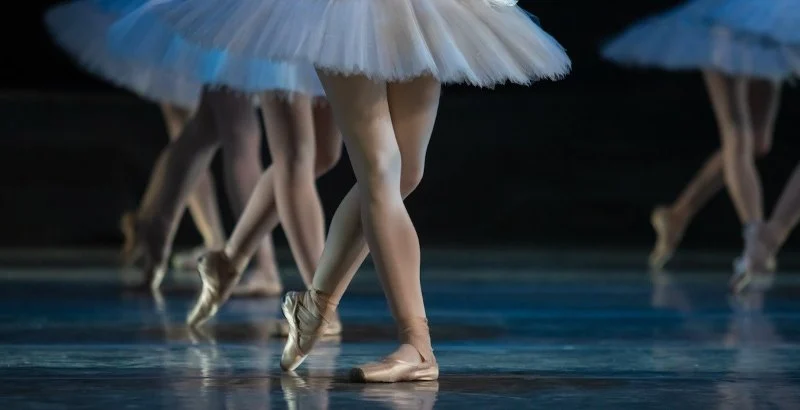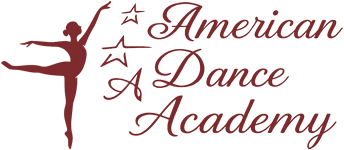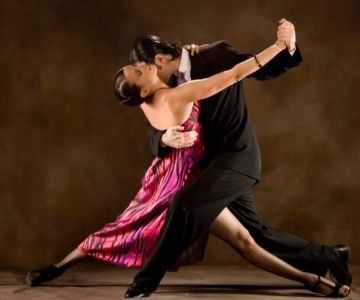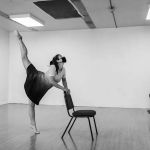
- Cultural Origins of Ballet
- Common Mistakes in Ballet Training
- How to Correct Ballet Mistakes
- Improving Your Ballet Technique
Cultural Origins of Ballet
Ballet is an elegant and highly technical form of dance with deep historical roots in European courts, particularly in France and Italy during the Renaissance period. Over the centuries, ballet has evolved into an art form that blends intricate movements with dramatic storytelling. Understanding the cultural origins of ballet is essential for anyone serious about mastering the art. Ballet's development is tied to the royal courts of the 15th century, where it was used as both entertainment and a symbol of social status. The term "ballet" itself is derived from the Italian word "ballare," meaning "to dance," and this rich history shapes how modern ballet is performed today.
1. Ballet’s Evolution from Court Dance
Ballet’s early origins trace back to the courts of Italy and France, where noblemen would perform dance routines during lavish events. The word “ballet” was coined during the reign of King Louis XIV of France, who founded the Royal Academy of Dance in 1661, formalizing ballet as an art form. It was during this time that the first professional ballet dancers emerged, and the classical ballet style we recognize today began to take shape.
2. Ballet's Connection to Artistic Expression
As ballet evolved, it became more than just a form of entertainment; it became a language of artistic expression. The creation of ballet companies and theaters allowed dancers to tell stories through expressive movement and innovative choreography, setting ballet apart from other forms of dance. Today, ballet continues to evolve while preserving its rich cultural heritage.
Common Mistakes in Ballet Training
As beautiful as ballet may seem, it’s a complex art form that requires discipline, patience, and technical mastery. Many beginners and even intermediate dancers fall into common traps that can hinder their progress and lead to frustration. Understanding these mistakes is the first step in improving your ballet skills.
1. Incorrect Body Alignment
One of the most common mistakes in ballet is improper body alignment. Ballet is all about posture, and a slight misalignment can have significant consequences on a dancer’s ability to execute movements correctly. For example, letting the knees collapse inward during pliés or having an overly arched back can strain muscles and lead to injuries over time. Proper alignment is crucial for maintaining balance and preventing injury.
2. Lack of Proper Footwork
Ballet requires precise footwork, and mistakes in this area are easy to make, especially when learning basic steps like tendus or relevés. Inadequate articulation of the feet can affect the quality of the dance and diminish overall performance. It’s important to focus on pointing the toes fully, extending through the arches, and using the entire foot during movements to achieve the desired effect.
3. Overexertion and Lack of Rest
Ballet is physically demanding, and many dancers make the mistake of pushing their bodies too hard. Overexertion can lead to injuries such as tendonitis or sprains. Rest is just as important as practice in ballet training. It’s crucial to listen to your body and take breaks when needed to allow muscles to recover and prevent burnout.
How to Correct Ballet Mistakes
Correcting mistakes in ballet requires consistent practice, focused attention, and a willingness to improve. Here are a few strategies to help you overcome common mistakes:
1. Practice with Awareness
To correct body alignment issues or improper footwork, dancers must practice with full awareness of their bodies. Use mirrors during practice to observe your form, and take the time to notice how each part of your body moves during every step. Slow down your movements and focus on perfecting each detail, from the positioning of your feet to the alignment of your torso.
2. Incorporate Flexibility and Strength Training
Many ballet mistakes stem from a lack of flexibility and strength. To correct these issues, it’s essential to incorporate specific flexibility and strength training exercises into your routine. Stretching the hamstrings, hip flexors, and back will increase flexibility, while strengthening the core, legs, and feet will give you more control over your movements.
3. Focus on Small Steps and Gradual Progress
Instead of rushing through routines, break them down into smaller components. Focus on perfecting one movement at a time before moving on to the next. Mastery of basic movements will improve overall performance and help to correct mistakes as you build a solid foundation for more complex routines.
Improving Your Ballet Technique
To excel in ballet, you must focus on continuous improvement and honing your skills. Ballet is a lifelong practice, and even professional dancers work tirelessly to refine their technique. Here are a few tips to help you advance your skills:
1. Take Regular Classes
One of the best ways to improve your ballet technique is by taking regular classes with an experienced instructor. An instructor can provide valuable feedback, correct mistakes, and guide you through advanced techniques that will enhance your performance. Private lessons or smaller class sizes can also provide more personalized attention.
2. Embrace Cross-Training
Cross-training is essential for improving your ballet skills. Exercises like Pilates, yoga, and strength training will help build the muscles necessary for better control, balance, and flexibility. In addition, aerobic activities like swimming or running can increase stamina, which is vital for longer, more demanding routines.
3. Stay Inspired and Motivated
Ballet is a challenging art form, but staying inspired and motivated is key to long-term success. Watch performances by professional ballet companies, attend ballet workshops, and connect with other dancers to share experiences. Learning from others can provide new insights into improving your technique and keeping your passion for ballet alive.
By understanding the cultural origins of ballet, avoiding common mistakes, and continuously working to improve your technique, you’ll be well on your way to becoming a skilled and graceful dancer. For more resources and training tips, visit American Dance Academy for guidance and the best products to enhance your practice.







 Encore Dance Center4.0 (22 reviews)
Encore Dance Center4.0 (22 reviews) BB DanceSport4.0 (5 reviews)
BB DanceSport4.0 (5 reviews) Dancer's Den NYC5.0 (3 reviews)
Dancer's Den NYC5.0 (3 reviews) Dance Gallery Chicago4.0 (37 reviews)
Dance Gallery Chicago4.0 (37 reviews) Gallim Dance5.0 (2 reviews)
Gallim Dance5.0 (2 reviews) Tutu School Arvada5.0 (6 reviews)
Tutu School Arvada5.0 (6 reviews) Do Schools in Paris Have Dances? Understanding French School Social Life
Do Schools in Paris Have Dances? Understanding French School Social Life The History of Tango to Burn Calories: A Dance to Fitness
The History of Tango to Burn Calories: A Dance to Fitness What Is Homecoming Dance in High School? Everything Students Should Know
What Is Homecoming Dance in High School? Everything Students Should Know Zumba Trending on TikTok: The Ultimate Guide to Get Moving
Zumba Trending on TikTok: The Ultimate Guide to Get Moving Contemporary Dance Every Dancer Should Know – What You Need to Know
Contemporary Dance Every Dancer Should Know – What You Need to Know The History of Bachata for Adults: Discover the Roots and Evolution of This Dance
The History of Bachata for Adults: Discover the Roots and Evolution of This Dance